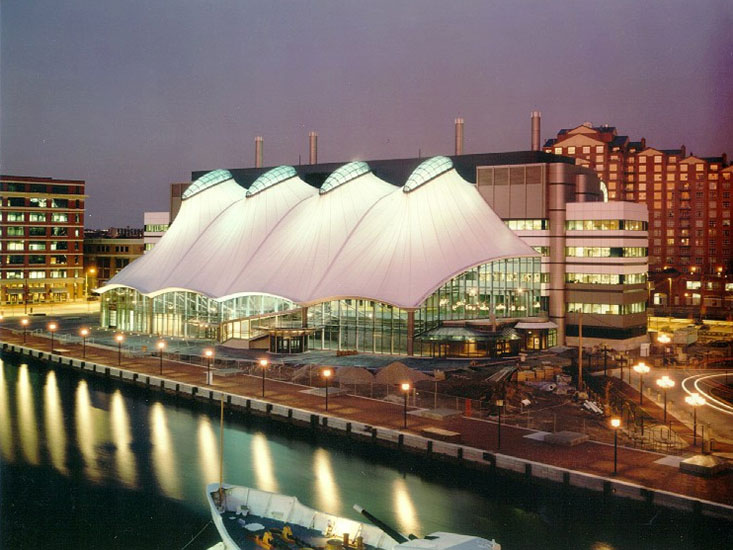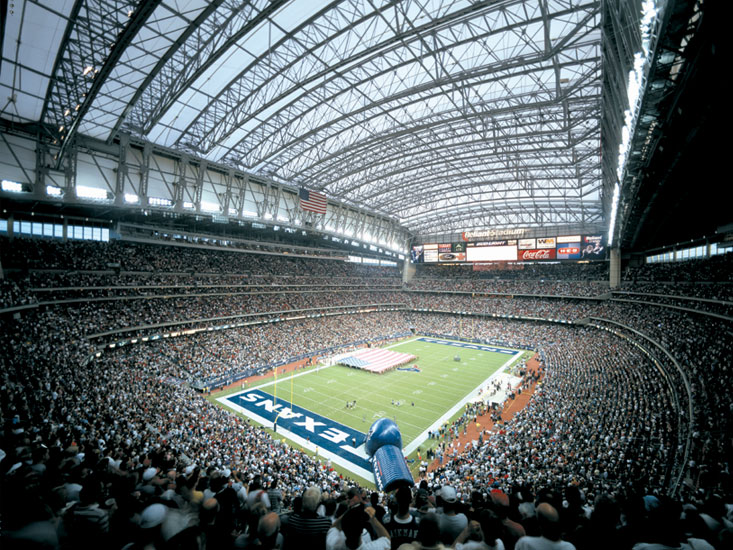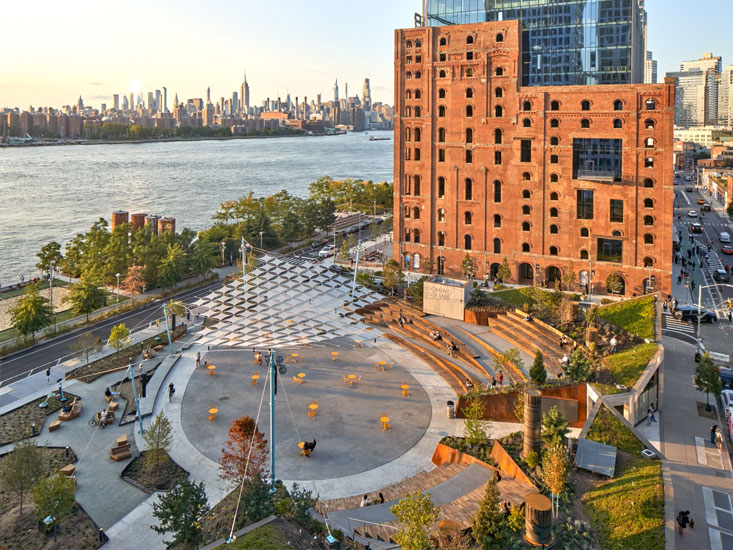
Birdair to Provide Curbside Cover at San Diego Airport’s New Car Rental Center
Seventeen inverted PTFE Membrane cone-structure canopies will create an open, inviting space that will bustle with airport guests and vehicles.
Published: August 06, 2014
After a long flight, the last thing travelers want is to struggle to find the right shuttle to take them to the right rental car company. San Diego International Airport’s (SDIA) new consolidated rental car center will not only prevent this frustration, but travelers looking to rent a car will be introduced to a beautiful new complex complemented by 17 inverted PTFE membrane cone-structure canopies by Birdair.
San Diego Airport’s consolidated Rental Car Center, set to open in 2016, will house leading national brands, as well as local, independent and small business rental car companies. The 17 inverted-cone PTFE membrane structure will create an open, inviting space that will bustle with airport guests and vehicles.
“We use PTFE to make beautiful yet functional structures. It is a great choice for the San Diego International Airport Rental Car Center,” said Tom Connell, Business Development Manager, Birdair North America. “Completely different from other building materials both aesthetically and functionally, it is the combination of uncommon physical and geometric characteristics that make tensile membrane structures iconic.”
Making the mundane, surreal
Architecture firm Demattei Wong Architecture, Parsons Brinckerhoff/Simon Wong engineering, and general contractor Austin/Sundt joint venture were working to complete this project. But, they needed something special to make the rental car center beautiful and unique while providing weather protection for the curbside walkways. They turned to Birdair, the expert on custom tensile structures, to design and construct canopies above the curbside walkways. The 17 inverted cone structures are made of fabric PTFE fiberglass membrane, with a steel supporting structure.
Part of the Plan
The new Rental Car Center is part of SDIA’s larger North Side Development plan. The plan includes a series of other improvements on the north side of the airport, including a new Fixed-Based Operator complex serving general aviation aircraft, an on-airport roadway and other roadway improvements, as well as a receiving and distribution center and improvements to the north entrance. These improvements will maximize the airport’s efficiency and make the most of the airport’s 661-acre footprint.
Directing Traffic
The Rental Car Center project is a massive two million square-foot structure that will house 12 rental car companies and will include a customer service building, a quick-turn-around car prep facility, and a 5,000-car ready/return area. The new center will serve as a central location for rental car customers, with one consolidated shuttle serving all rental car companies, versus the many brand-specific shuttles that have served the airport up to this point. This will dramatically reduce rental car traffic on Harbor Drive and the number of shuttle buses circulating around the airport.
Not Red or Yellow, but “Green”
Building on the airport’s ongoing commitment to sustainability, the Rental Car Center will be designed to achieve LEED certification, incorporating “green” design principles such as use of alternative energy sources, recycled materials, renewable resources and water-saving fixtures.
The building will utilize photovoltaic solar power panels, increasing solar power generation to 2.5 MW and decreasing operational costs, while making a substantial long-term impact on the environment by reducing traffic, air pollution and the rental car facilities’ real estate footprint.
In Gear with the Environment and Budgets
Fabric structures are not only visually appealing but also environmentally sensitive and economically competitive. PTFE fiberglass is Energy Star and Cool Roof Rating Council certified. PTFE fiberglass membranes reflect as much as 73 percent of the sun’s energy, and certain grades of PTFE fiberglass can absorb 14 percent of the sun’s energy while allowing 13 percent of natural daylight and seven percent of re-radiated energy (solar heat) to transmit through.
The lightweight membrane also provides a cost-effective solution requiring less structural steel to support the roof or façade, enabling long spans of column-free space. In addition, membrane offers building owners reduced construction costs and maintenance costs compared to traditional building materials.
Fabric roof forms are curved between supporting elements in a manner reflective of the flow of tension forces within the membrane. With the exception of air-supported structures, these curvatures are anticlastic in nature. The curving forms of fabric roofs have dramatic appeal. Another attractive feature of tensioned fabric structures is their enormous range of spanning capability, perfect for the car rental center canopies.
Teflon® is a registered trademark of E. I. Du Pont De Nemours and Company, Delaware.
Download PDF Version: BIR_SanDiegoAirportRentalCarCenter_PressRelease_final(8-6-14).pdf
San Diego Airport Consolidated Rental Car
Location: San Diego, CA
About Birdair: Birdair, Inc. is the leading specialty contractor of custom tensile structures throughout the world. In addition to pre-construction services such as design assistance, budgeting, construction methodologies and project scheduling, Birdair provides design-build solutions in all aspects of project design, engineering, installation and maintenance. The company offers a selection of architectural fabric membranes, including PTFE fiberglass, ETFE film, PVC and Tensotherm™. Birdair, based in Buffalo, NY, is a member of the Taiyo Kogyo Group, with operations serving North and South America and other international locations. For more information about Birdair, like us on Facebook, call 1-800-622-2246 or visit www.birdair.com.



